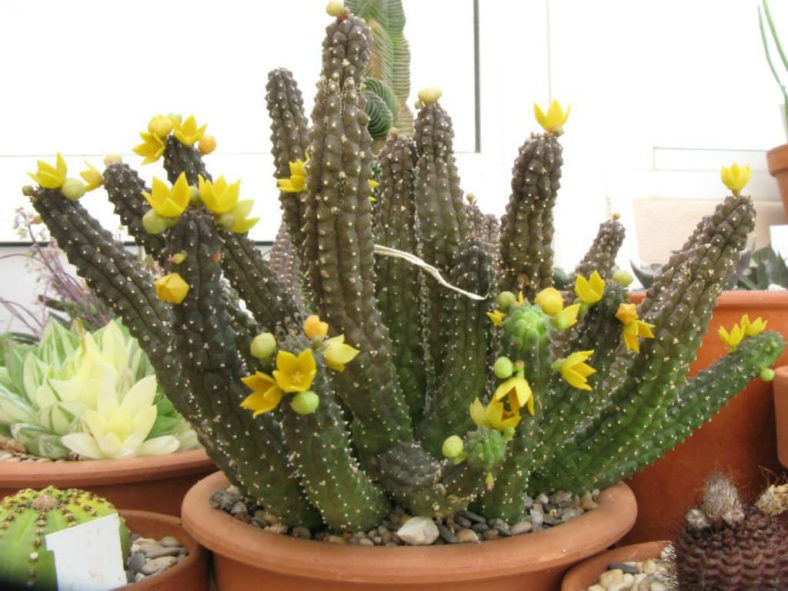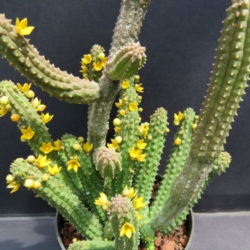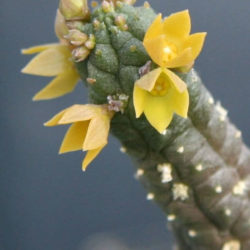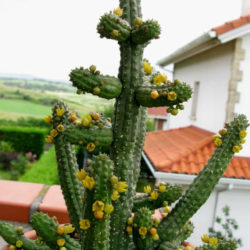Scientific Name
Echidnopsis cereiformis Hook.f.
Synonym(s)
Ceropegia cereiformis, Stapelia cylindrica
Scientific Classification
Family: Apocynaceae
Subfamily: Asclepiadoideae
Tribe: Stapeliae
Genus: Echidnopsis
Description
Echidnopsis cereiformis is a small succulent with cylindrical stems with 6 to 10, usually 8 ribs lined with slightly prominent, more or less hexagonal tubercles. The stems typically grow up to 12 inches (30 cm), sometimes up to 24 inches (60 cm) long, at first erect, becoming prostrate with age. They range from green and dull dark green to brownish-green or reddish. Each tubercle has a leaf rudiment at the tip, which soon dries out.
In the fall, the plant produces lovely, bell-shaped, usually yellow to orange, sometimes brownish or brownish-purple flowers along the stems, mainly near the tip of the stems.
Origin
Echidnopsis cereiformis is native to Sudan, Ethiopia, Eritrea, and Yemen.

Hardiness
USDA hardiness zone 10a to 11b: from 30 °F (−1.1 °C) to 50 °F (+10 °C).
How to Grow and Care
Stapeliads are relatively easy to grow. However, they should be treated as outdoor plants as they will easily rot indoors and cannot flower without exposure to outdoor temperature fluctuations. They should be grown under cover so that watering can be controlled. They require a reasonable amount of sunlight to promote flowering and maintain a well-shaped plant. Very shady positions will produce very poor flowering. Stapeliads come from climates where they survive extremely high temperatures in the summer months, so most growth is in spring and autumn, with flowering in fall when the weather starts to cool down. Water in moderation when needed in the growing season, ensuring the soil is fairly dried out between waterings. Do not water between November 1 and March 1.
The easiest and best way to propagate Stapeliads is from stem cuttings which can be taken virtually throughout the year. Seed is also a method of propagation.
See more at How to Grow and Care for Stapeliads.
Forms and Varieties
Links
- Back to genus Echidnopsis
- Succupedia: Browse succulents by Scientific Name, Common Name, Genus, Family, USDA Hardiness Zone, Origin, or cacti by Genus
Photo Gallery
Click on a photo to see a larger version.


